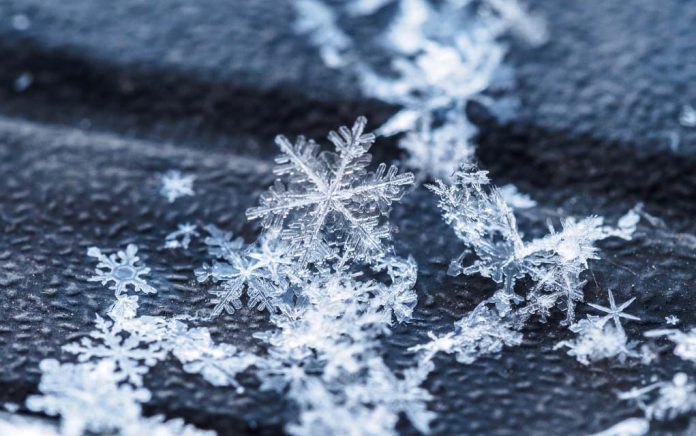
(RepublicanPress.org) – There’s just something mystical about a soft snowfall on a frigid winter day. Everything seems to go deeply silent as a gentle peace settles over the land. It’s easy to get lost in the moment while curled up with a cup of hot cocoa, but you just might miss out on the real magic of snowflakes by staying inside.
You’ve probably already heard that every individual snowflake is unique. But did you know that most are quite literally tiny, frozen works of art, too? Take a look at these fractal-filled examples tweeted by American Science Mag:
Although the word #snowflake usually conjures up images of flower-like forms, single crystals of snow come in a myriad of shapes and sizes.
❄️ "The Formation of Snow Crystals" ❄️https://t.co/XabfETwgln pic.twitter.com/dsI0awC3Mm
— American Scientist (@AmSciMag) November 30, 2022
So, what exactly is it that makes snowflakes so beautiful and unique? It turns out nature and science are mostly responsible for this incredible phenomenon.
It all starts with a tiny droplet of water nestled comfortably in a cloud. That H2O begins to plummet toward the Earth when it suddenly strikes microscopic dust. If the ambient temperature is under 32 degrees Fahrenheit, it immediately turns into ice.
Relative humidity within the air triggers the intricate crystalline shapes found in the most common snowflakes. The greater the ambient saturation, the more likely you are to see complex structures (called plates and columns). Conversely, snowflakes are far more likely to stay simple on extremely cold, dry days. Because the conditions in the air have such a large impact on the formation of snowflakes, each one develops differently.
While scientists do believe snowflakes are as unique as fingerprints, meaning that no two are ever exactly the same, they do all typically have six sides. That’s because water itself almost always freezes into hexagon-shaped crystals.
Oh, and in case you were wondering, other liquids can also form snowflakes of varying structures. The process doesn’t always involve freezing temperatures and won’t always result in six exact sides. For example, the metal gallium develops a fractal-like structure when exposed to electricity. Interesting!
Copyright 2022, RepublicanPress.org







